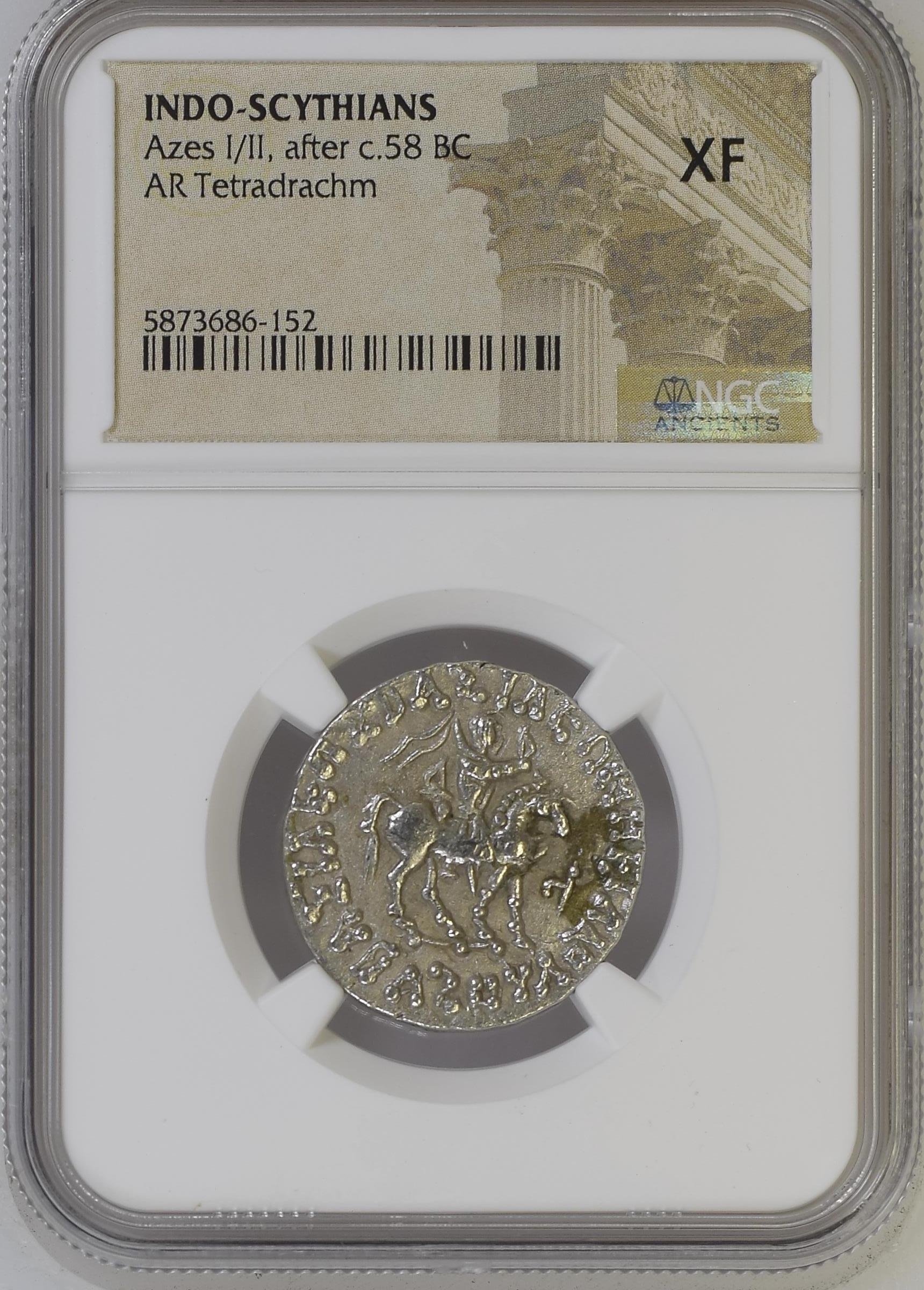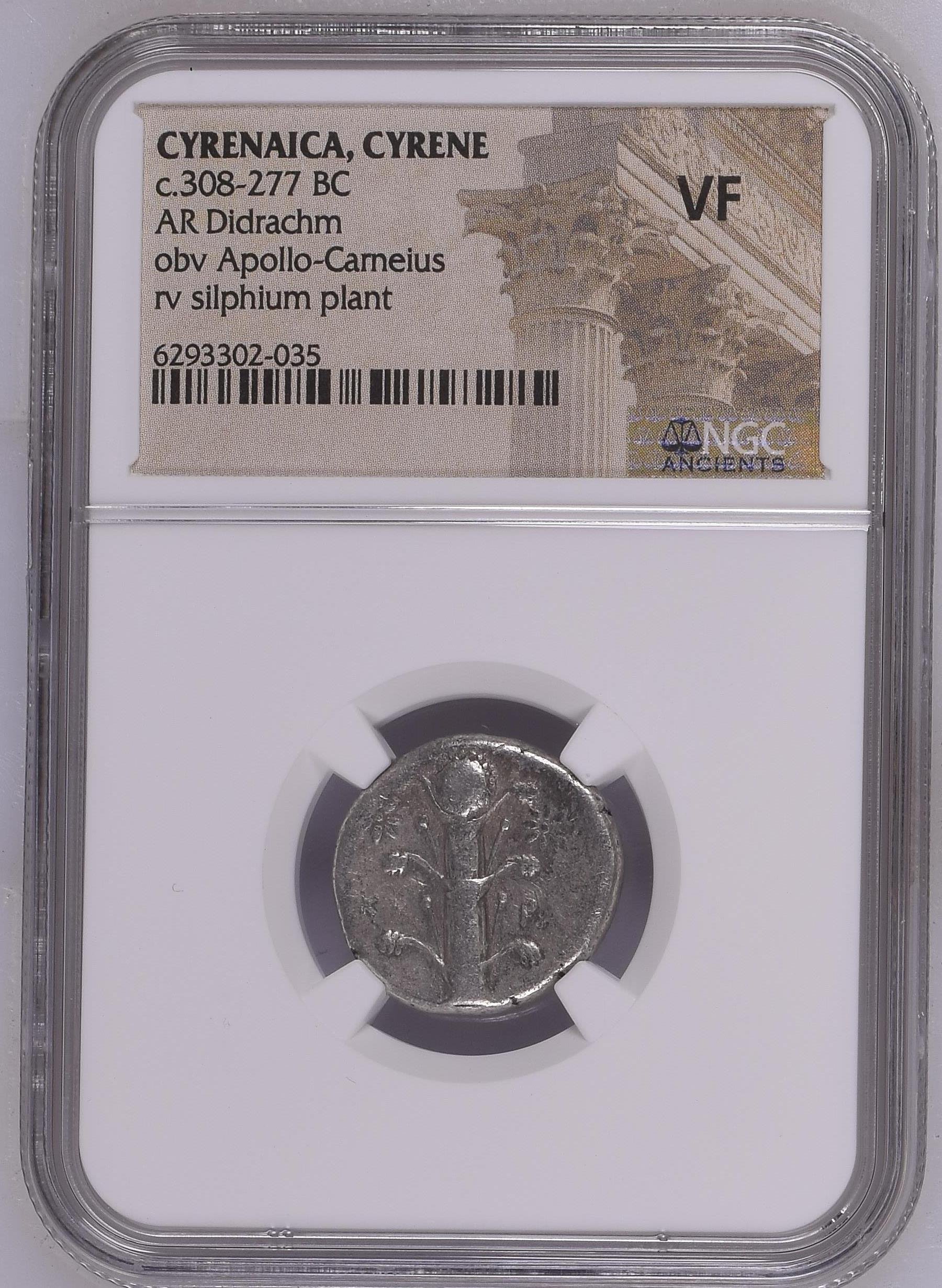 Image 1 of 2
Image 1 of 2

 Image 2 of 2
Image 2 of 2



Cappadocian Silver Drachm (Medium Silver Coin) of King Ariarathes IV (about 2210 years ago)
This silver drachm (medium-valued silver coin) was minted in 188/87 BC (Year 33 of his reign) in Cappadocia (region in central Turkey).
Front Side: Features the head of King Ariarathes IV facing right, wearing a royal diadem (headband)
Back Side: Shows Athena (goddess of wisdom and warfare) standing left, holding a spear, shield, and small figure of Nike (goddess of victory), with monograms in the inner left and outer right fields, "RA" in the exergue (space below the main design), and the Greek inscription "BAEIAEQE APIAPAOOY EYEEBOYE" (of King Ariarathes the Pious)
Technical Details:
Weight: 4.18 grams
References: Simonetta-27
Historical Significance: Ariarathes IV ruled Cappadocia during a period when the kingdom was navigating complex diplomatic relationships between the Seleucid Empire and the rising power of Rome. His long 58-year reign brought stability to Cappadocia, and he maintained friendly relations with Rome while pursuing Hellenization (Greek cultural influence) within his kingdom. The Athena imagery on this coin reflects Greek cultural influences, while the epithet "Eusebes" (Pious) demonstrates how Hellenistic kings promoted their religious devotion as part of their royal propaganda. This specific coin, minted in Year 33 of his reign, provides precise dating evidence for archaeologists and historians.
This silver drachm (medium-valued silver coin) was minted in 188/87 BC (Year 33 of his reign) in Cappadocia (region in central Turkey).
Front Side: Features the head of King Ariarathes IV facing right, wearing a royal diadem (headband)
Back Side: Shows Athena (goddess of wisdom and warfare) standing left, holding a spear, shield, and small figure of Nike (goddess of victory), with monograms in the inner left and outer right fields, "RA" in the exergue (space below the main design), and the Greek inscription "BAEIAEQE APIAPAOOY EYEEBOYE" (of King Ariarathes the Pious)
Technical Details:
Weight: 4.18 grams
References: Simonetta-27
Historical Significance: Ariarathes IV ruled Cappadocia during a period when the kingdom was navigating complex diplomatic relationships between the Seleucid Empire and the rising power of Rome. His long 58-year reign brought stability to Cappadocia, and he maintained friendly relations with Rome while pursuing Hellenization (Greek cultural influence) within his kingdom. The Athena imagery on this coin reflects Greek cultural influences, while the epithet "Eusebes" (Pious) demonstrates how Hellenistic kings promoted their religious devotion as part of their royal propaganda. This specific coin, minted in Year 33 of his reign, provides precise dating evidence for archaeologists and historians.
This silver drachm (medium-valued silver coin) was minted in 188/87 BC (Year 33 of his reign) in Cappadocia (region in central Turkey).
Front Side: Features the head of King Ariarathes IV facing right, wearing a royal diadem (headband)
Back Side: Shows Athena (goddess of wisdom and warfare) standing left, holding a spear, shield, and small figure of Nike (goddess of victory), with monograms in the inner left and outer right fields, "RA" in the exergue (space below the main design), and the Greek inscription "BAEIAEQE APIAPAOOY EYEEBOYE" (of King Ariarathes the Pious)
Technical Details:
Weight: 4.18 grams
References: Simonetta-27
Historical Significance: Ariarathes IV ruled Cappadocia during a period when the kingdom was navigating complex diplomatic relationships between the Seleucid Empire and the rising power of Rome. His long 58-year reign brought stability to Cappadocia, and he maintained friendly relations with Rome while pursuing Hellenization (Greek cultural influence) within his kingdom. The Athena imagery on this coin reflects Greek cultural influences, while the epithet "Eusebes" (Pious) demonstrates how Hellenistic kings promoted their religious devotion as part of their royal propaganda. This specific coin, minted in Year 33 of his reign, provides precise dating evidence for archaeologists and historians.
Ariarathes IV, surnamed Eusebes, "the Pious", (Ancient Greek: Ἀριαράθης Εὐσεβής, Ariaráthēs Eusebḗs), was the king of Cappadocia in 220–163 BC.
Ariarathes IV was the son of the king of Cappadocia Ariarathes III and his Macedonian Greek wife Stratonice.[1] He was a child at his accession, and reigned for about 57 years.[2] He married his cousin Antiochis, the daughter of Antiochus III the Great, king of Syria, and Laodice III, and, in consequence of this alliance, assisted Antiochus in his war against the Romans. After the defeat of Antiochus by the Romans in 190 BC, Ariarathes sued for peace in 188, which he obtained on favourable terms, as his daughter, Stratonice, was about that time betrothed to Eumenes II, king of Pergamum, whom she later married, and became an ally of the Romans. In 183–179 , he assisted Eumenes in his war against Pharnaces, king of Pontus. Polybius mentions that a Roman embassy was sent to Ariarathes after the death of the Seleucid Antiochus IV Epiphanes, who died 164.
Antiochis, the wife of Ariarathes, is said to have at first borne him no children, and accordingly substituted two surrogates, who were called Ariarathes and Orophernes. Subsequently, however, it was said that she actually bore her husband two daughters and a son, who was named Mithridates, and afterwards became Ariarathes V, and then she informed Ariarathes of the deceit she had practiced upon him. The two surrogates were in consequence sent away from Cappadocia, one to Rome, the other to Ionia.[3]
You Might Also Like







